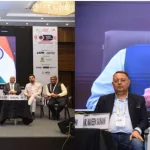 The fashion world is redefining what it means to be really fashionable these days. Fashion experts have discovered a new medium, termed ‘sustainability’, to express their ideas with respect to the apparel designing, usages plus their recycling and reuse. The redefined fashion is supposed to be such that the garment, which is at their centre stage, must be given the respect it deserves, by producers and retailers, and also by consumers. That means any garment that, if worn, gives some positive message and expresses our support for sustainable consumption behaviour.
The fashion world is redefining what it means to be really fashionable these days. Fashion experts have discovered a new medium, termed ‘sustainability’, to express their ideas with respect to the apparel designing, usages plus their recycling and reuse. The redefined fashion is supposed to be such that the garment, which is at their centre stage, must be given the respect it deserves, by producers and retailers, and also by consumers. That means any garment that, if worn, gives some positive message and expresses our support for sustainable consumption behaviour.
A fashion garment must be designed and re/used so as to turn it into a powerful tool to spread awareness of sustainability and circularity i.e. the possibility to close the loop by looping everything in the value chain, by using bio based materials from sustainably managed resources or by recycling. Extending the wear-life of a garment can be a very effective tool to achieve sustainability. The Swedish research has shown that if an average garment stays in use 3 times longer than today, its carbon footprint is reduced by 65% and its water use by 66%. This looks quite promising as well as achievable without much effort.
The Swedish Foundation for Strategic Environmental Research has undertaken a research program called “The Mistra Fashion” aimed at enabling the Swedish fashion industry to address the sustainability challenges emerging in today’s world. The research aims at establishing material (re-)flows and technologies to ensure high value reuse, material recovery, and fiber regeneration, and to evolve new business models that promote reuse, collective use and pro-longed use of both fibers and clothes. Some examples are : leasing & hire, clothing swap markets, clothing libraries, vintage sales of used own brand, and repair and redesign initiatives. The Swedish Chemicals Group, GOTS, Higg Index, Sustainable Apparel Coalition, Better Cotton Initiative, Clean Clothes Campaign, Fair Wear Foundation, DressCode, NICE, Oeko-Tex®, SCAP, and Made-By are some of them.
The Swedish research has revealed that 25% of climate impact of a garment comes from consumer transport to and from the store. The belief that one could reduce climate impact by lowering washing temperature turned out to be wrong as it gives only a 1% reduction of the full climate impacts of a garment. The major environmental impacts occur in the production phase, from fibre to garment. The design aspects can reduce this impact by improving the durability and by optimizing resource use. The research has revealed that if strategic design thinking is used to re-imagine current products, a products’ environmental performance would be improved by up to 41%. The greatest improvement comes through changes on how to make the product more easily recyclable and sourcing alternative materials and coatings. This significant achievable gain in carbon footprints empowers designers to play an important role in the redefined fashion. There is, therefore, no wonder that the movement of sustainability and circular economy is led by leading fashion designers and institutes the world over. They are also able to generate new ideas for technologists to focus on for achieving the precise objectives via new products and processes.
G.D. JASUJA
Managing Editor





